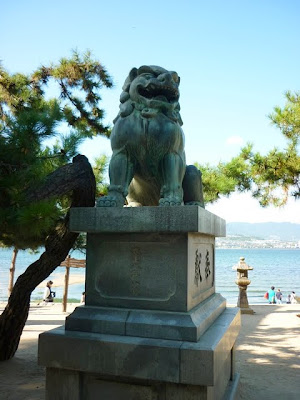
For this final, reflective post I have decided, for my first picture, to include another portrait, because that's what we started with, and I thought it only fitting to end with one. It is a picture of me, taken in Umeda, in Osaka. I feel it is symbolic of several things. First of all, there is the road sign in the background displaying Japanese kanji, which drive the point home that I am really in Japan (both for you and for me). Secondly, there is a hotel in the background called "Hotel Il Monte" - this, for me, represents the "internationalisation" of Japan, and how both English and other foreign languages and cultures are so popularised here in their re-interpreted Japanese forms. This is something you can see every day when you walk down the street - you can see shops with French signs in their windows; English/Engrish on every corner; Chinese and Korean restaurants; Thai massage parlours. You can find it all here. And finally - the ubiquitous Coca-Cola logo, as profound a symbol of the globalisation of Japan, if there ever was one.
Why does this photograph represent my changed impressions of Japan? Well, before I came here, I was under the impression that Japan was still very much concerned with its own history and traditions, and the mainenances and proliferation thereof. And while Japan still remembers its cultural roots (visible in temples, shrines, household customs, geishas in the street and many other features of Japanese everyday life), it seems to me to be a country which has merged its identity in many ways with that of other countries and cultures. The commplex result is the marvellous, multifaceted mélange that has so quickly become commonplace to my eye, yet never fails to charm me.

This final picture is very possibly my favourite that I have taken in Japan. For me, it very much represents my changed impression of Japan. When I used to think of this country, I used to think of towering skyscrapers, bright, flashing lights, fast-paced lifestyle and cutting-edge technology. Certainly, all those things can be found there. However, between myself and that front, I found houses and little gardens and those Japanese dogs that everyone has, and boxy little cars, and just people, regular people. That's the thing about Japan. Everything you see, you could pretend was really in your own country, but it looks subtly different somehow, subtly foreign, though you can't pinpoint why. Despite this, the important thing to remember is, this isn't another planet; we are not living on the Moon. These people are just people, like you and I.



































